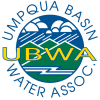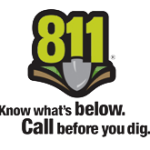Umpqua Basin Water Association has complied with the Lead and Copper Rule Revision.
The United States Environmental Protection Agency (EPA) adopted revisions to the Lead and Copper Rule in 2021 that include a requirement for public water systems to conduct inventories of service lines and to identify service line material. The intent of the service line inventory is to identify those service lines made of lead so that they can be scheduled for removal and replacement.
We are pleased to confirm that the Umpqua Basin Water has complied with the Lead and Copper Rule Revision. As part of our commitment to ensuring the safety and quality of our drinking water, we have conducted an assessment of our water infrastructure using public records, historical plan reviews, customers information as well as physical inspections.
All of our evaluations have confirmed that there are no lead service lines present within the the UBWA water system. We remain dedicated to maintaining the highest standards of public health and safety, and we will continue to monitor our water systems regularly to ensure ongoing compliance with all regulatory requirements.
Should you require any additional information or documentation, please do not hesitate to reach out.
Lead in Drinking Water
Did you know that Umpqua Basin Water Association is required to sample for Lead and Copper in our water distribution system every 3 years? Lead was a common service line material used in some parts of the country, but it has not been documented as an often-used material for water services in the Pacific Northwest. It was, however, used in plumbing fixtures which can leave traces of lead in drinking water.
In compliance with the Environmental Protection Agency (EPA) 2008 revision of the Lead and Copper Rule, UBWA’s Lead and Copper sampling sites consist of single-family structures with copper pipes with lead solder installed after 1982 (but before the effective date of Oregon’s lead ban which was 1985) or contain lead pipes and/or that are served by a lead service line. In 1986, Congress banned the use of lead material in plumbing but allowed existing pipes to remain in service.
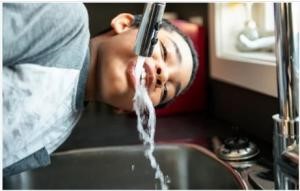
Revised Lead and Copper Rule 2021
In December 2021, the EPA published the revised Lead and Copper Rule. Umpqua Basin Water currently has over 3500 water services in our distribution system and over 290 miles of pipe. This is a major task for a staff of 7 field personnel, and given our limited resources, we are asking for your help as we reach to comply with the new rule. We know that there is no lead service lines in our service area, yet we are asking for your help in the documentation process of your service lines.
What We Do To Protect Your Water
UBWA treats water from the North Umpqua River and it produces high-quality water for domestic, industrial and commercial purposes. The Membranes we use along with our treatment process and practice, keep the pH levels for the finished water closer to the normal range (7.45 to 8.15). The result is clean and safe drinking water for our customers
How Does Lead Get In My Water
Water leaving the treatment plant and traveling through water mains are always free of lead. However, lead is sometimes present in your lateral pipes connecting older homes to the water system or in fixtures of older homes internal plumbing. Studies have shown that most lead in drinking water is the result of the corrosive action of water in your home plumbing and homes of a certain age are most susceptible. Again, UBWA uses products in the treatment process that keeps the pH in the normal range. This helps to minimize the possibility of any lead dissolving into the water at your residence or building. There are additional steps you can take to ensure that lead is not an issue in your plumbing. Sources of lead in your plumbing and fixtures may include:
-
- Copper Pipe with Lead Solder
-
- Faucets and fixtures
-
- Galvanized Pipe
-
- Lead Goose Necks and Pigtails that connect your pipes to the water meter
How to Reduce Lead in Your Drinking Water
There are steps you can take right away to reduce the possibility of lead in your water.
-
- Run the Tap before Use – Lead levels are likely at their highest when water has been sitting in the pipe for several hours. Clear this water from your pipes by running the cold water for several minutes, which allows you to draw fresh water from the water main. Please remember to be water wise and try not to waste water. You can use this water on house plants or to flush toilets.
-
- Clean Aerators – Aerators are small attachments at the tips of faucets which regulate the flow of water. They can collect small particles of lead in their screens. It’s a good idea to remove your aerators at least monthly and clean them out.
-
- Use Cold Water for Drinking and Cooking – Always cook and prepare baby formula with cold water, because hot water dissolves lead more quickly, resulting in higher levels.
-
- Change Out Old Fixtures – Plumbing regulations now stipulate that all fixtures must be manufactured lead-free. Consider installing new fixtures and/or pipes to eliminate sources of exposure.
-
- Filter the Water – Many home water filters are effective at removing lead. If you purchase a filter, make sure it is certified for lead removal and that you maintain it properly. Find out more on filter certification at https://www.nsf.org/testing/water/water-treatment/water-treatment-filtration-systems.
-
- Do Not Boil Water – Boiling water will not remove lead from the water.
Health Effects of Lead
Exposure to lead in drinking water can cause serious health effects in all age groups. Infants and children can have decreases in IQ and attention span. Lead exposure can lead to new learning and behavioral problems or exacerbate existing learning and behavioral problems. The children of women who are exposed to lead before or during pregnancy can have increased risk of these adverse health effects. Adults can have increased risks of heart disease, high blood pressure, kidney, or nervous system problems. Click HERE for EPA’s website where you can read more about the health effects of lead.
Please refer to our How to Identify Pipe Material section to help you determine what type of pipe material you have entering your house. The Interactive Links to Identifying Pipe Material section below lists interactive websites to help identify pipe materials. Once you have identified your pipe material, or if you already know your pipe material, please use the webform to submit the information to our office. If possible, please include two or three photographs of where your service line enters your house for documentation purposes. You can also send us an email of your pipe material information and photographs to office@ubwa.org.
How Do I Identify My Service Pipes Material
Step 1 – Locate where your service line connects to the water meter and where your service line enters your house/building
The connection to the UBWA service, is typically found just outside of the meter box where the regulator or backflow device may be located. This line is typically the same material as the connection point when it enters the house, garage or crawl space. It could also be located near the water heater or the washing machine. Generally from that point, the installer (plumber) will have adapted the service line over to the same type of material as the plumbing that runs inside the house. A shut off valve may have been installed on the pipe after or just before the point of entry into the house or building.
UBWA uses brass parts to connect the water meter to your service line. If you have had work done on your regulator, gate valve or backflow device by a plumber, this may have changed. Please also note that change.
Identify a test area on the pipe between the point where it leaves the water meter and where it enters the residence/building. If the pipe is covered or wrapped, expose a small area of metal.
Step 2 – Perform the scratch and magnet test
Scratch Test – Use a flat head screwdriver or a coin to perform a scratch test
Magnet Test – Use a refrigerator magnet to perform the magnet test
Step 3 – Identify the service line material
Each type of pipe will produce a different type of scratch, react differently to the magnet, and make a unique noise when tapped with your screwdriver or coin. Follow the instructions below to help identify your service line material.
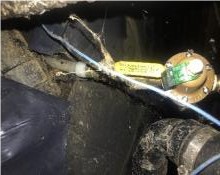
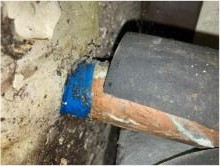
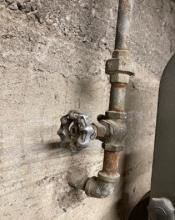
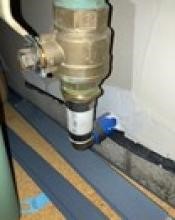
Copper or Brass
-
- Scratch Test – Scraped area is like a copper penny
-
- Magnet Test – Magnet will not stick
-
- Tap Test – Tapping sound is metallic and ringing
-
- Threads – No threads
-
- Copper pipes could be bluish in appearance
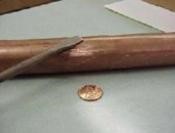
Galvanized Pipe
-
- Scratch Test – Scraped area remains dull silver or gray
-
- Magnet Test – Magnet will stick
-
- Tap Test – Tapping sound is metallic and ringing
-
- Threads – Has threads
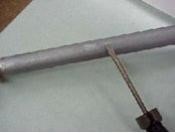
Lead Pipe
-
- Scratch Test – Scrapes easily to shiny bright silver
-
- Magnet Test – Magnet will not stick
-
- Tap Test – Tapping sound is dull
-
- Threads – No threads
-
- Bulbous where connects to pipe or shutoff
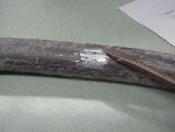
Plastic
-
- Scratch Test – Scrape feels dull and not metallic
-
- Magnet Test – Magnet will not stick
-
- Tap Test – Tapping sound is dull like plastic
-
- Threads – No threads
-
- Could be any number of colors (white, red, blue, clear)

SUBMIT YOUR SERVICE LINE MATERIAL HERE
Links to Help Identify Your Pipe Material
EPA – Protect Your Tap: A Quick Check for Lead
NPR – Do You Have Lead Pipes In Your Home
EPA – Advice to Chicago Residents About Lead in Drinking Water
LSLR Collaborative –Identifying Service Line Material
AWWA YouTube video: Together, Let’s Get the Lead Out
Umpqua Basin Waters Annual Water Quality Report Page
Click HERE to see the annual Consumer Confidence Reports also known as Water Quality Reports.
Please complete the webform about your water service line to help us continue to be an Outstanding Performer in our compliance with the State. UBWA is required to have the service line inventory completed by October 2024. With your assistance, regarding your personal service line, UBWA can fulfill this requirement.
If you have questions, feel free to call us at 541-672-5559 about the Lead and Copper Rule, how to identify your pipe material, the webform, or email office@ubwa.org.


